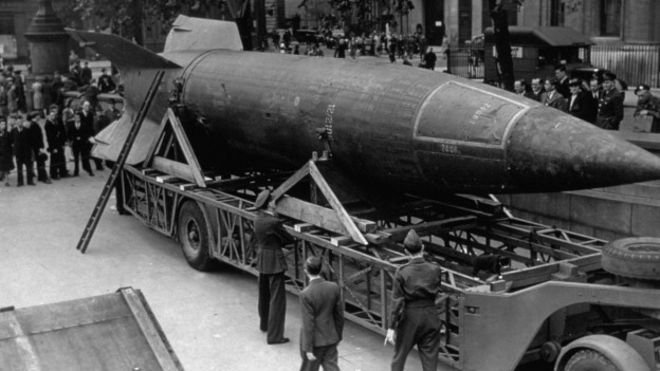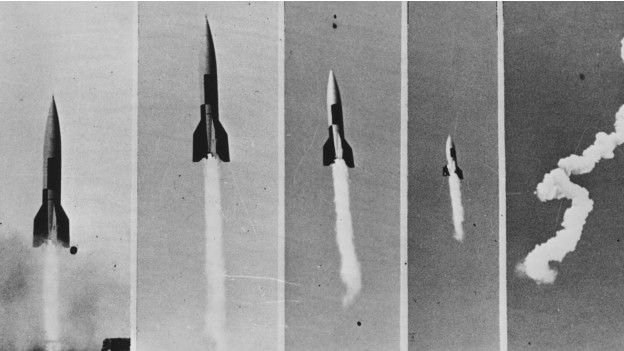
After the war, there was a battle between the allies to seize the technology of the V2. In the photo, one of the missiles displayed in Trafalgar Square, in central London.
Although these terrifying weapons, built by slave labor, had no major impact on the outcome of the war, they did have the potential to change the world.
"There was an unseemly battle to appropriate the technology of the V2 missiles," says Briton John Becklake, former head of engineering at the Science Museum in London. "That's what the Americans, the Russians, the French and also us were doing."
The leader of the weapons program created by Hitler as revenge for the bombing of the German cities, Wernher von Braun surrendered to US forces in May 1945 and was secretly taken to the US.
In the same month, the Russians seized the research and testing facilities of von Braun in Peenemunde on the Baltic coast.
The French, meanwhile, managed to reunite 40 scientists and space engineers and the British embarked on a project to assemble rockets for a series of test flights.
Technology of "another world"

He had designed an engine of considerable size, an advanced jet to fill fuel fast enough and a sophisticated steering system.
"Literally, the rocket was from another world," says Becklake who later helped restore a V2 that was displayed at the museum. "It was packed with advanced technology."
Observing from space
Engineers from the British Interplanetary Society in London decided that this technology could help them build a spacecraft, a dream that only five years ago they considered crazy.
In 1946 Ralph Smith, a member of the society, designer, and artist, presented a detailed proposal to adopt a V2 missile to "a manned rocket".

On the other side of the Atlantic, the story was different. In the photo, try V2 in New Mexico, in 1945.
The rocket would not have enough power to place a person in orbit. Instead, the astronaut (and only considered sending one) would be launched on a parabolic trajectory about 300,000 meters above the Earth.
Launched at an angle of two degrees, when reaching the space the rocket would be detached and the segmented trunk would detach to make the capsule visible.
Smith placed two windows in the design and suggested that the space pioneer, equipped with a suit to fly at high altitudes, could use his few minutes in space to make observations of Earth, the atmosphere and the Sun.